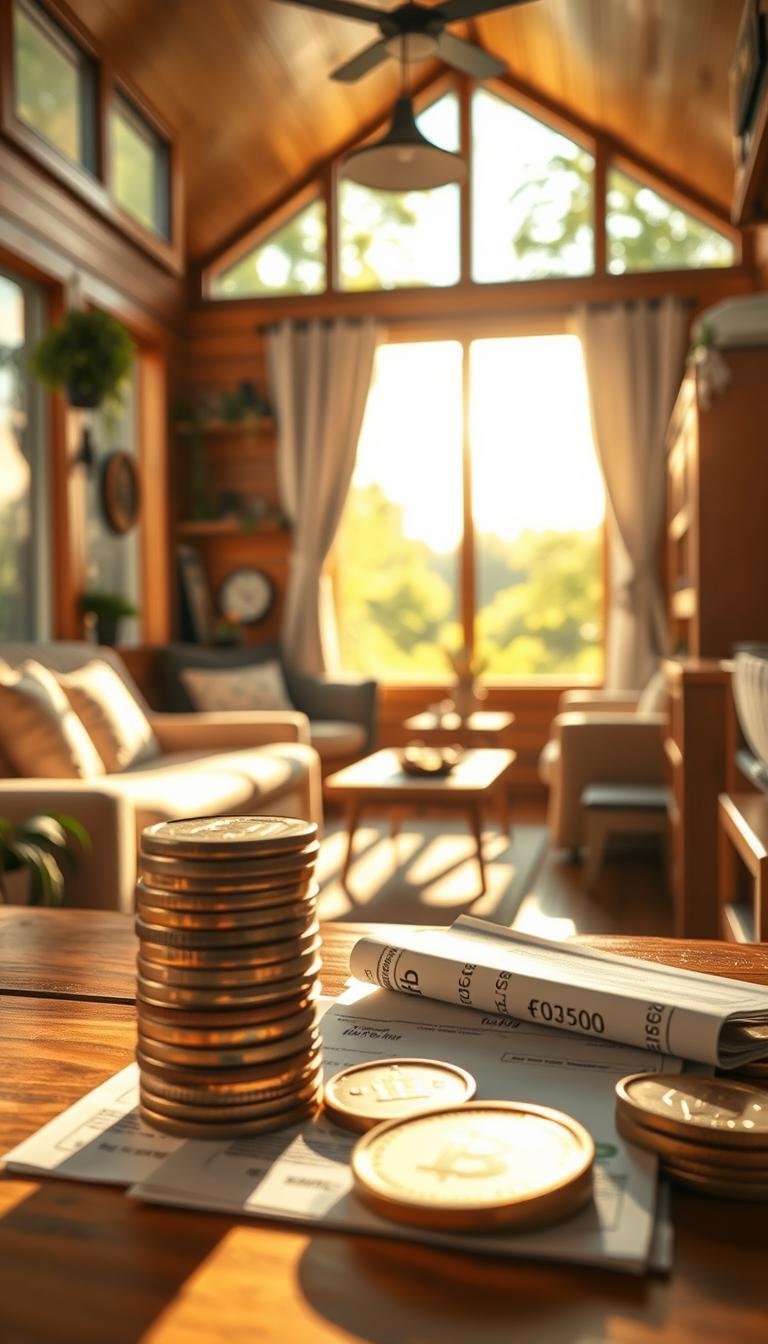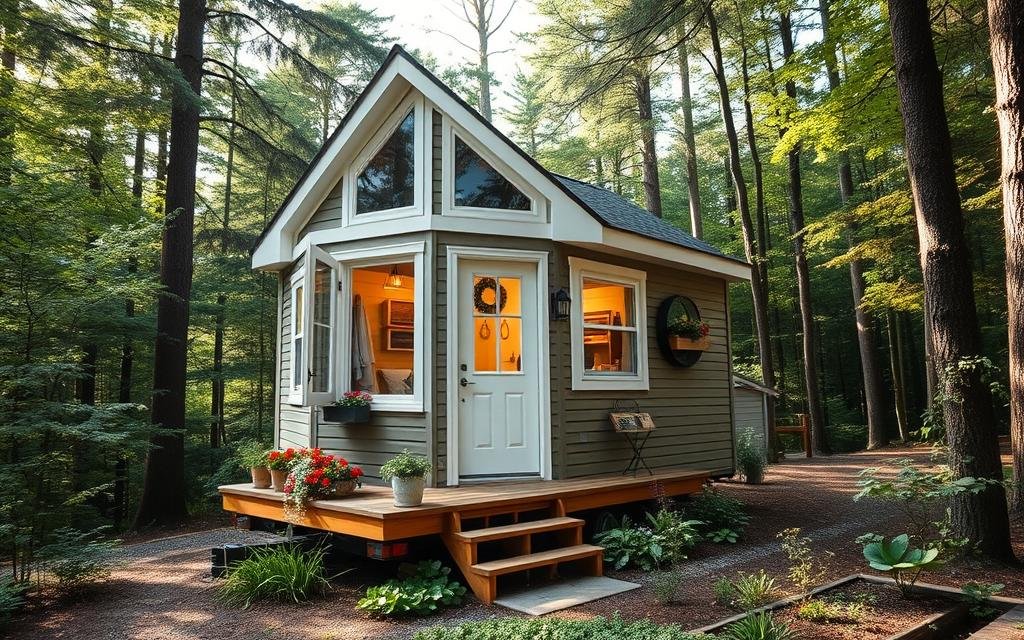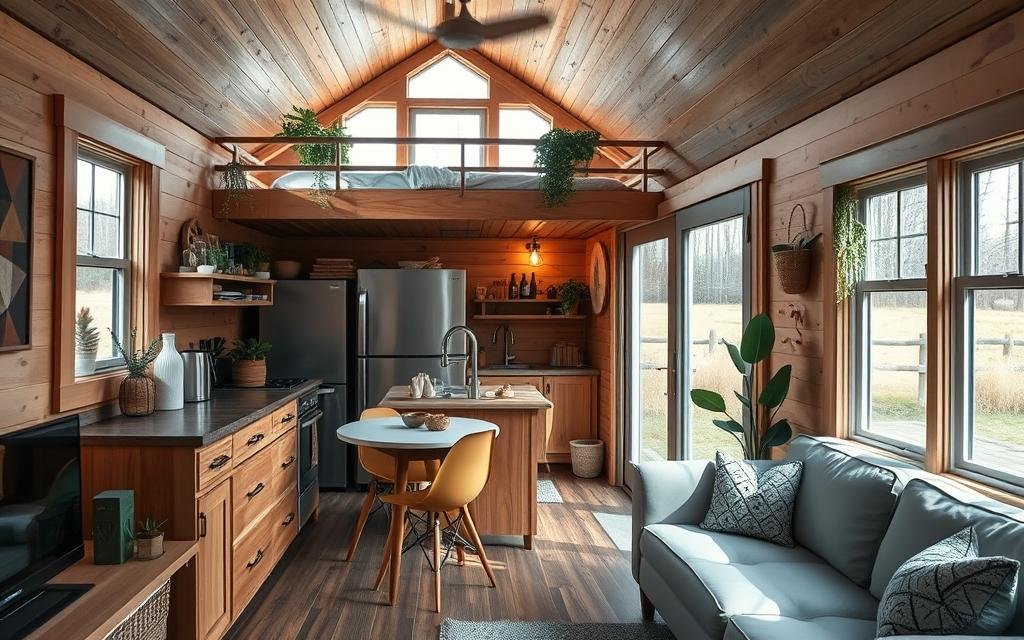With housing costs rising faster than incomes, many Americans are rethinking their living spaces. The average U.S. house now spans 2,400 square feet, but a growing number of people are choosing compact dwellings under 500 square feet. These smaller spaces aren’t just trendy—they’re practical solutions for cutting costs without sacrificing comfort.
Pratt Homes, a Texas-based builder with 25+ years of experience, demonstrates how compact designs can include luxury features like custom flooring and modern kitchens. While tiny properties make up less than 1% of real estate sales, their popularity grows as homeowners seek relief from oversized mortgages and high maintenance bills.
Downsizing offers more than just lower purchase prices. Utility bills shrink dramatically in smaller spaces, and repairs cost far less than in traditional houses. Many owners also enjoy the flexibility to relocate easily, avoiding property tax hikes in expensive neighborhoods.
Key Takeaways
- Compact homes reduce monthly utility and maintenance costs by up to 80% compared to standard houses
- Customizable designs allow for budget-friendly upgrades without overspending
- Minimal square footage encourages intentional spending habits and clutter-free living
- Lower energy needs lead to year-round savings on heating and cooling
- Portable options provide financial flexibility for relocation or rental opportunities
Understanding the Tiny Home Movement
For decades, the American Dream meant owning a sprawling house with white picket fences. But economic realities have reshaped this vision. Average property sizes ballooned to 2,400 square feet before families started questioning whether more space truly meant better living.

The Shift from Traditional Homes
The 2007 financial crisis became a turning point. As mortgages collapsed, innovative housing solutions emerged. Compact dwellings gained traction as practical alternatives to foreclosure risks and unmanageable debt. Today’s tiny homes average 250 square feet – smaller than many studio apartments.
| Aspect | Traditional Home | Tiny Home |
|---|---|---|
| Average Size | 2,400 sq ft | 100-400 sq ft |
| Monthly Utilities | $200-$400 | $20-$80 |
| Mortgage Period | 30 years | 0-7 years |
| Relocation Cost | $10,000+ | Often wheeled |
Minimalist Lifestyle and Economic Benefits
Smaller spaces force smarter spending. Owners report 60-80% reductions in monthly bills compared to standard houses. Without room for excess, purchases become intentional – a natural defense against impulse buying.
The global market for these dwellings is projected to grow $5.8 billion by 2024. This surge reflects growing recognition that compact living isn’t about sacrifice, but strategic financial freedom. Many residents now enjoy urban locations they couldn’t afford in traditional housing markets.
8 Ways Living in a Tiny Home Can Save You Money
Modern homeowners are discovering that smaller footprints lead to larger bank balances. Compact dwellings eliminate common financial burdens through smart design and intentional living choices.
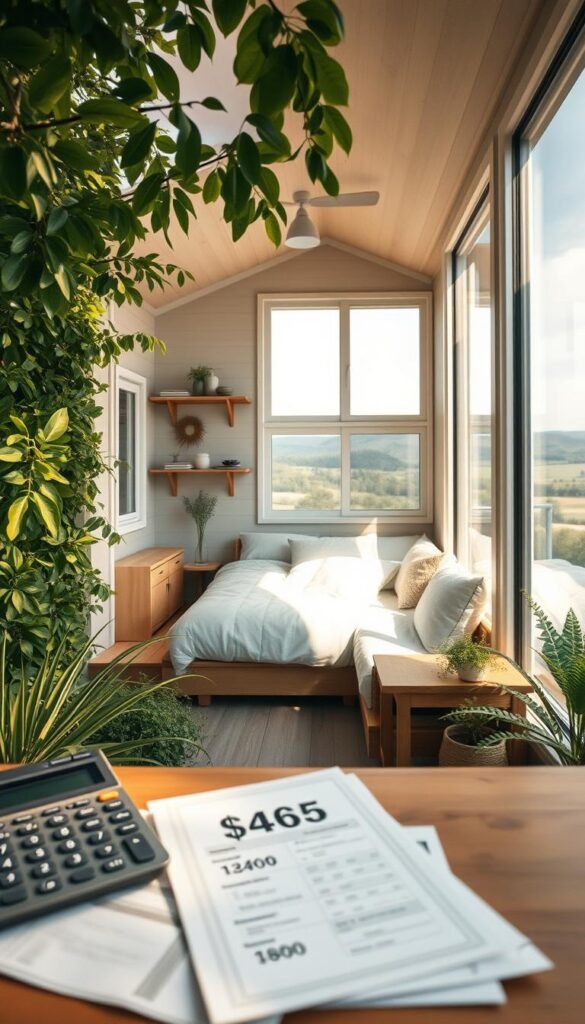
No Mortgage and Debt-Free Living
Over two-thirds of compact house owners avoid mortgages entirely. Compare this to traditional properties, where 71% of buyers face decades-long payment plans. Self-built units average $23,000 – less than most car loans.
The price gap becomes clearer when examining average costs: $279,859 for standard houses versus $60,000 for premium tiny house models. This difference allows 65% of residents to eliminate credit card debt completely. Check our free Tiny House Price Calculator.
| Financial Factor | Tiny Home | Traditional Home |
|---|---|---|
| Average Purchase Price | $60,000 | $279,859 |
| Mortgage-Free Owners | 68% | 29% |
| Credit Card Debt | 35% have balances | 65% carry debt |
Reduced Utility and Maintenance Costs
Heating 500 square feet costs under $20 monthly – 80% less than standard house bills. Controlled factory construction minimizes weather damage, cutting repair costs by 60%.
Many manufacturers include 10-year warranties on structural components. This protection shields budgets from unexpected expenses like roof replacements or foundation repairs common in traditional homes.
Combined, these savings create financial flexibility. Owners often redirect funds toward retirement accounts or travel budgets rather than pouring money into oversized properties.
Smart Financial Strategies for Tiny Homeowners
Compact dwellings separate housing costs from land ownership, creating unique financial opportunities. Savvy residents leverage this distinction through creative partnerships and mobile designs that maximize location advantages.
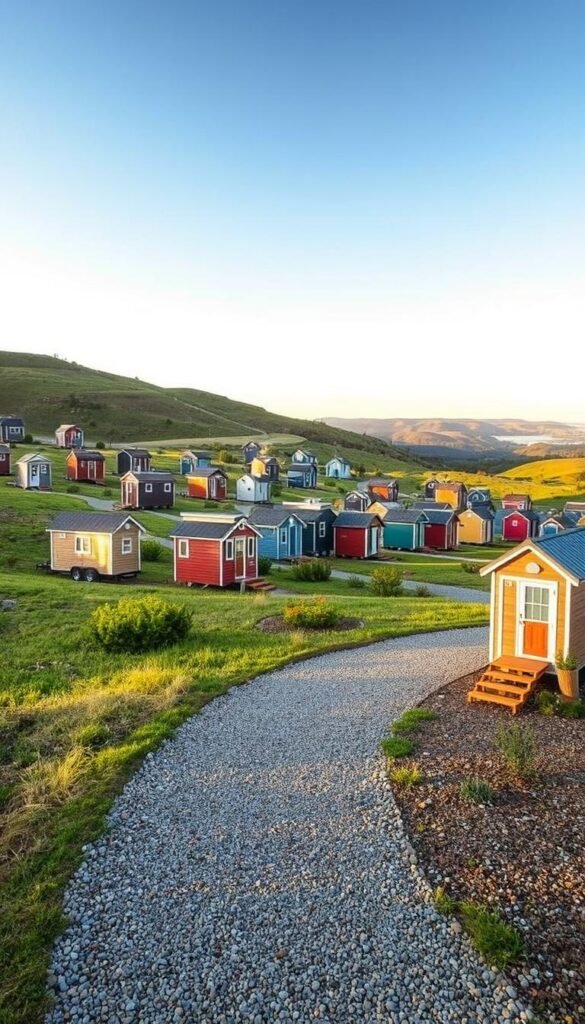
Flexible Location and Land Investment
Geographic freedom becomes a financial superpower with wheeled tiny houses. Owners chase better climates or job markets while maintaining home equity. Some negotiate caretaker agreements – maintaining property in exchange for affordable living spaces.
Consider these land strategies:
| Approach | Traditional Home | Tiny Solution |
|---|---|---|
| Urban Access | Requires $500k+ mortgage | Rent backyard space for $400/month |
| Vacation Property | $1M+ second home | Park mobile unit seasonally |
| Land Investment | Tied to single location | Relocate as values shift |
Premium construction materials become affordable at smaller scales. Many owners install granite counters or hardwood floors that would break budgets in larger properties. This quality boosts resale value – the market for used tiny houses grew 23% last year.
Off-grid options let buyers acquire remote land parcels at campground prices. Solar systems power these compact spaces efficiently, eliminating utility hookup costs. It’s how one Colorado couple lives mortgage-free on 10 wooded acres they purchased for $18,000.
Lower Overhead and Long-Term Savings
Financial freedom takes on new meaning when every square foot serves multiple purposes. Compact living spaces naturally limit unnecessary purchases while amplifying the value of intentional design choices.
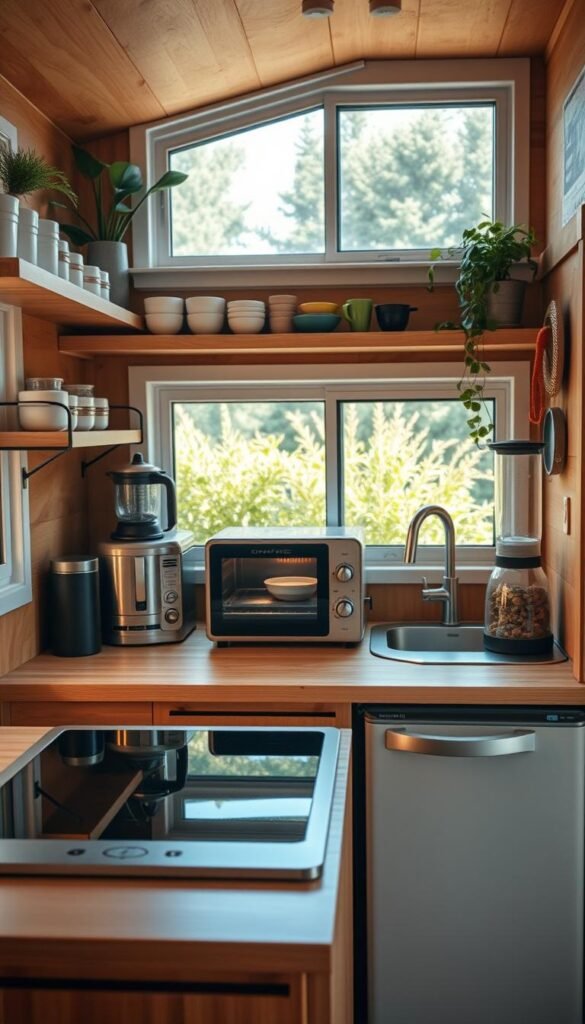
Minimized Expenses on Furnishings and Appliances
Filling 300 square feet requires strategic buying. Owners typically spend 90% less on furniture compared to traditional households. Multi-functional pieces like fold-down tables replace entire dining room sets.
Appliance costs drop sharply in smaller spaces. Compact refrigerators use 40% less power than standard models. Tankless water heaters save space while cutting energy use by 25% annually.
| Expense Category | Traditional Home | Compact Solution |
|---|---|---|
| Furnishing Costs | $30,000+ | $2,500 average |
| Appliance Expenses | $12,000 | $3,800 |
| Annual Energy Costs | $2,200 | $480 |
Energy Efficiency and Eco-Friendly Upgrades
Heating compact spaces costs 80% less than warming 2,400-square-foot houses. Many residents install solar panels that cover all power needs. Some even earn credits by selling excess energy back to local grids.
Propane systems eliminate natural gas hookup fees. Above-ground tanks cost $150 annually versus $600+ for underground lines. Composting toilets save $1,200 yearly on water and sewer bills.
These upgrades pay for themselves within 3-5 years. Long-term savings compound as efficient systems require less maintenance. The average owner saves $18,000 over a decade compared to conventional utility costs.
Embracing a Minimalist Lifestyle in a Tiny Home
Choosing compact spaces transforms how families interact with their environment and finances. Limited square footage creates natural barriers against excess, turning every purchase into a deliberate decision. This approach builds financial resilience through conscious consumption.

Simplifying Possessions to Maximize Savings
Space constraints become financial superpowers in compact dwellings. Research shows 58% of those who live tiny maintain $11,200 more savings than average Americans. Without extra room for clutter, impulse buys decrease by default.
Shared living areas strengthen family bonds while reducing entertainment costs. Children in combined spaces often require fewer structured activities. Parents report 40% less spending on toys and gadgets compared to traditional households.
| Financial Factor | Tiny Home Benefit | Traditional Home Cost |
|---|---|---|
| Annual Storage Fees | $0 | $1,200+ |
| Impulse Purchases | 14% of residents | 63% report regular overspending |
| Decluttering Profit | $3,800 average | $450 typical garage sale |
The lifestyle shift extends beyond physical spaces. Many residents develop lasting money management skills. One Colorado family eliminated $28,000 debt by selling unused possessions before downsizing.
Reduced square footage slashes replacement costs for furniture and appliances. Compact living enthusiasts spend 87% less annually on home goods. This idea of intentional ownership creates lasting financial freedom.
Conclusion
Economic shifts are reshaping how Americans view success. Compact dwellings offer more than shelter – they create financial independence through intentional design. Owners gain control over budgets by eliminating mortgages and slashing utility bills, redirecting funds toward meaningful goals.
The benefits multiply over time. Resale values climb as demand grows, with quality tiny homes appreciating faster than many traditional houses. Simplified spaces reduce stress by removing clutter, freeing owners to focus on experiences rather than possessions.
This lifestyle shift addresses modern challenges. Rising housing costs meet practical solutions through mobile designs and efficient systems. What begins as a money-saving choice often becomes a gateway to life-changing freedom – proving small footprints can leave lasting financial legacies.

